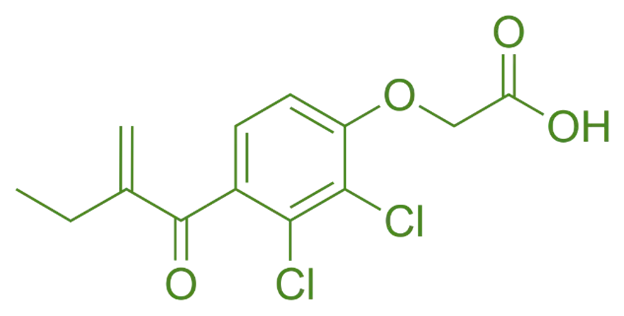Ethacrynic Acid is a loop diuretic used to treat edema by increasing urine output without containing sulfa, making it suitable for sulfa-allergic patients.
Structure of Ethacrynic Acid
- Ethacrynic acid is a non-sulfonamide loop diuretic with a vinyl group and a double bond, distinguishing it from other loop diuretics.
- Chemical Formula: C₁₂H₁₅NO₄
Advertisements

Mode of Action
- Loop of Henle Inhibition: Inhibits the Na⁺/K⁺/2Cl⁻ symporter in the ascending limb of the loop of Henle.
- Sodium, Potassium, Chloride Excretion: Promotes significant diuresis by increasing the excretion of these ions.
- Calcium and Magnesium Retention: Enhances reabsorption of calcium and magnesium, reducing kidney stone risk.
Advertisements
Uses
- Edema: Treats fluid retention in congestive heart failure, renal disease, and liver cirrhosis.
- Hypertension: Utilized to lower blood pressure by reducing blood volume.
- Hypercalcemia: Manages elevated calcium levels through increased excretion.
- Acute Pulmonary Edema: Provides rapid diuresis to relieve lung congestion.
- Hyponatremia: Addresses low sodium levels by promoting sodium excretion.
Click Here to Watch the Best Pharma Videos
Advertisements

